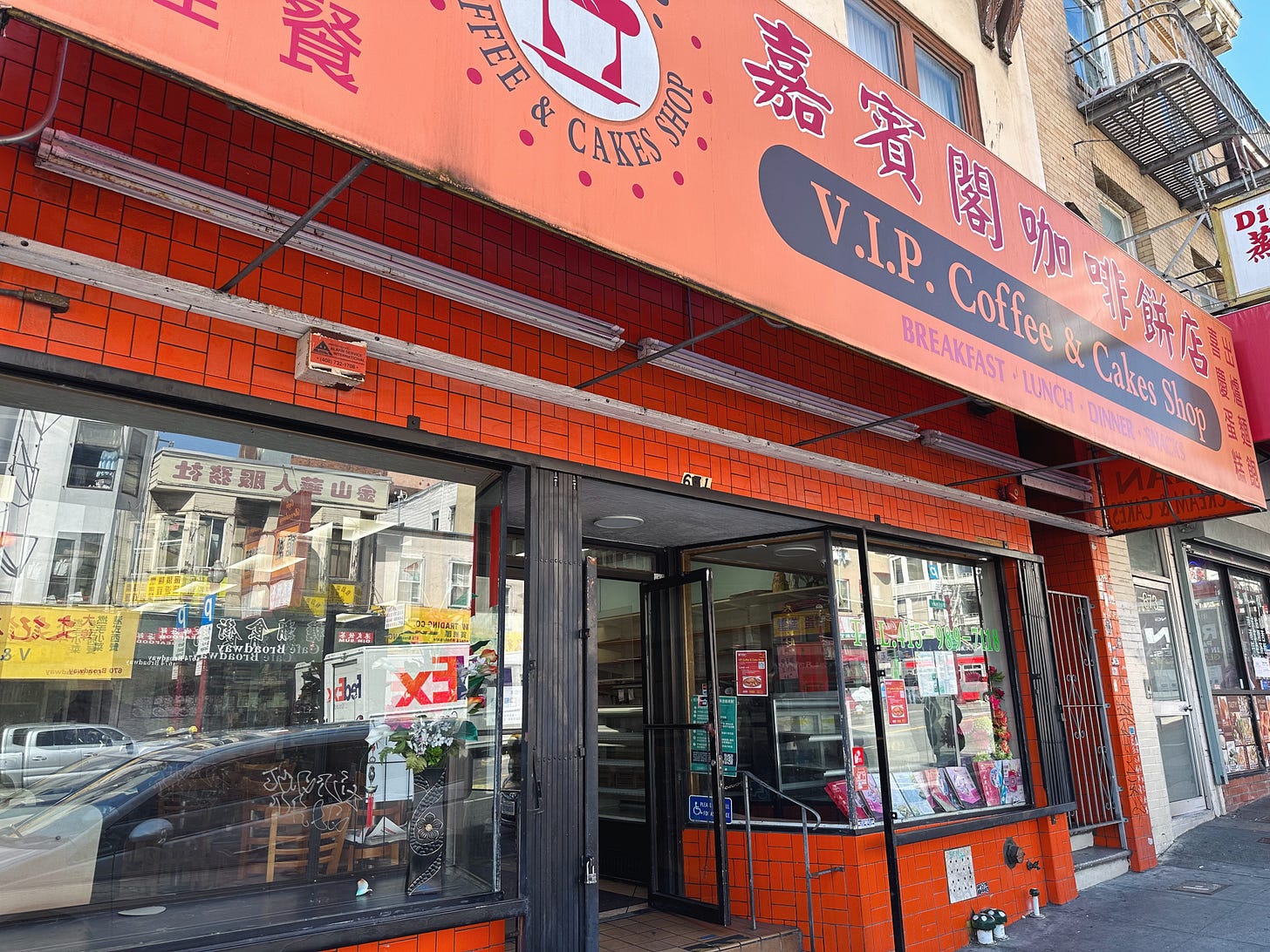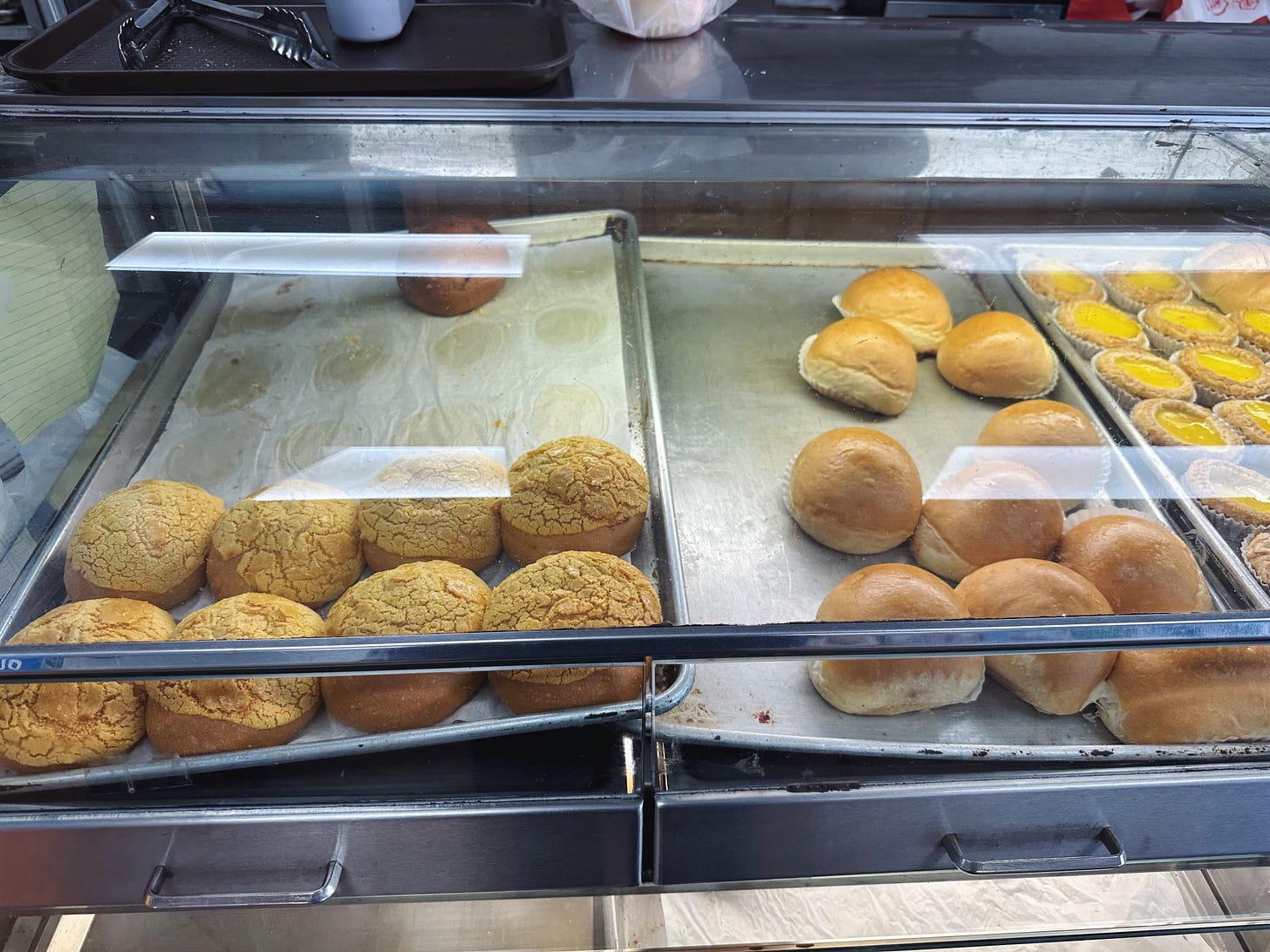As I walk up West College Street, pass the Los Angeles Chinatown Metro Station, and begin making a left turn on Broadway, a sense of warping déjà vu mixed with nostalgia always strikes me.
Immediately, I’m transported back to 1993, and I’m walking down Broadway in San Francisco’s Chinatown hand-in-hand with my Po-Po (Cantonese for grandmother). She brings me to the bakery section of the V.I.P. Coffee & Cakes Shop, and orders a pink box filled with Cantonese pastries. I devour most of the BBQ pork and pineapple buns immediately. The place always bustles and stimulates; smells of Hong Kong-style cuisine consume the cafe, patrons speaking Cantonese at loud volumes, leaving me without a clue as to whether they’re mad at each other or engaging in everyday conversation with dials turned up (IYKYK). The elderly men are smoking their Lucky Strikes and reading the Sing Tao Daily newspaper. After grabbing a snack, Po-Po and I head over to the markets on Stockton Street.
At one of the markets, we hit the produce section of a market to grab choy sum, Chinese broccoli, bok choy, apples, oranges, and lychee. In the poultry section, she orders soy sauce marinated chicken, and in the seafood section, she requests some fresh cod from the fishmonger. Last but not least, Po-Po lets me grab a box of Pocky, Botan Rice Candy, and a bag of White Rabbit—ya boy’s in absolute heaven at this point, and my heart smiles as I think about this memory.
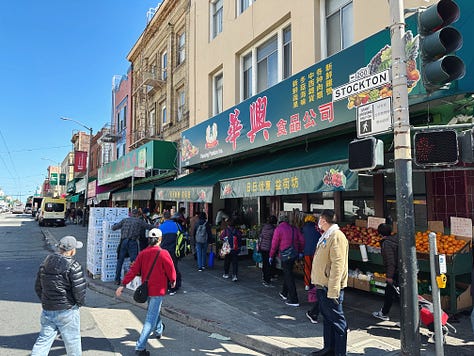


Next, we walk over to meet with my Gung-Gung (Cantonese for grandfather), who’s playing Chinese chess at Portsmouth Square with more elderly men who smell of cigarettes, barking at each other, and bantering about the move that was just made. I look around and I see a group of elderly women practicing Tai Chi in a grassy area under the trees. In the playground, kids of all ages frolic on slides, swings, and play structures. Now, five year-old me obviously has no idea what he is witnessing at the time, but looking back, it's clear to me this was his first experience of a real sense of community.

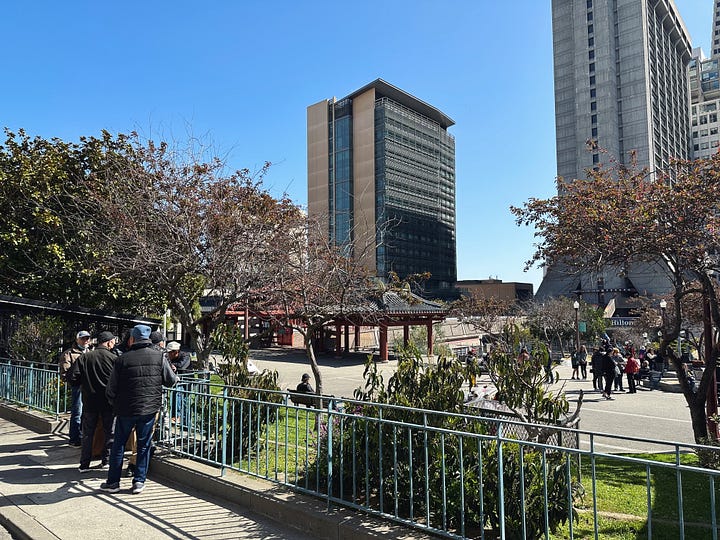
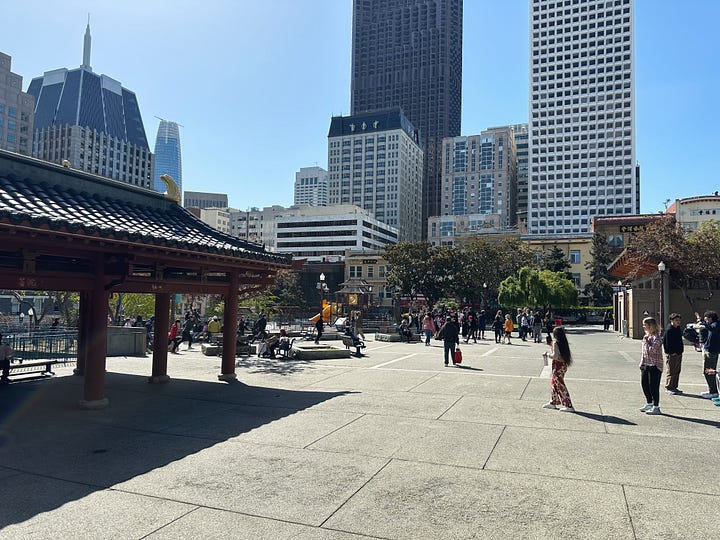
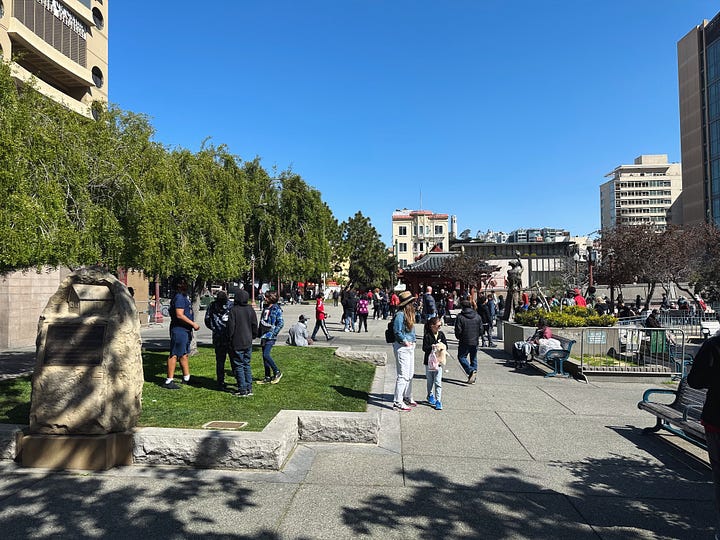
Fast-forward thirty years later: I find myself having lived in LA Chinatown for about five months, and honestly, I didn’t move here as a way to feel closer to my heritage or culture. The main reason my girlfriend and I moved here was because our apartment checks many of the convenience boxes that were important to us. But these five months have sparked such vivid memories of my childhood in SF Chinatown that I’m starting to attach familial, cultural, and generational significance to living here.
Actually, scratch that: I’m choosing to attach significance to my experience living here as a multi-layered reclamation of my identity as a Chinese person—an identity blurred by cultural assimilation to Western life.
Even though I’m from the Bay Area, as a Chinese person, every Chinatown is my community. How beautiful and human is that? Whether I’m 300 miles or 10,000 miles away from home, if I’m in a Chinatown, I’m in my community. To know, and feel, this fact empowers my soul. It’s the ultimate reminder that our community transcends time and place, representing the true meaning of community to me, and I’ve witnessed multiple examples of this in LA Chinatown.
A distinct characteristic I’ve noticed when meandering the streets and alleys of Chinatown is the converging of past and present. Landmark areas like Central Plaza have been here for close to 100 years, and while there’s been significant renovation on the majority of buildings, they all still maintain elements of their classic flair. I’ll bring my coffee and sit on a bench in the plaza, wondering what daily life here felt like in previous decades; what did the energy feel like when every storefront and space was occupied? What conversations were happening? What were people wearing? What music were they listening to? But, even with this connection between the past and present, there’s a generational divide that exists, as well.
As a Millenial ABC (American Born Chinese), my parent’s generation and my own have dealt with generational divide for a long time. Many of the cultural traditions I grew up around no longer exist, or exist with less frequency. (As a kid, I remember yearly Lunar New Year celebrations that would consist of multi-day dinners and family gatherings. Sadly, this doesn’t happen anymore.) But from what I’ve seen in LA Chinatown, the majority of businesses are still either owned by Chinese immigrants or children of immigrants/first or second-generation Asian-Americans. While it would be impossible to follow the exact blueprint of the types of businesses their parents operated, it’s evident that (my) generation has taken the blueprint from their parents and injected their own energy/culture into it; paying homage to the past but adding their own flavor to the soup.
A prime example of the interconnectivity within LA Chinatown is the Far East Plaza. I was able to chat with people from businesses within the plaza like The Fulcrum Press, Amboy, Lasita, Endorffeine, Scoops, Thien Huong, East West Shop, and Laroolou. They talked about how they share many of the same restaurant vendors, promote each other’s businesses to customers, and find ways to connect outside of business hours–I could feel a shared sense of community over competition in each conversation. And to hear the story of how a group of cooks banded together during the pandemic, to reignite the energy in Chinatown, sparks inspiration. Ironically, as I learned through research for this essay, there has also been a veil over the knowledge I couldn’t evade: gentrification within Chinatown.
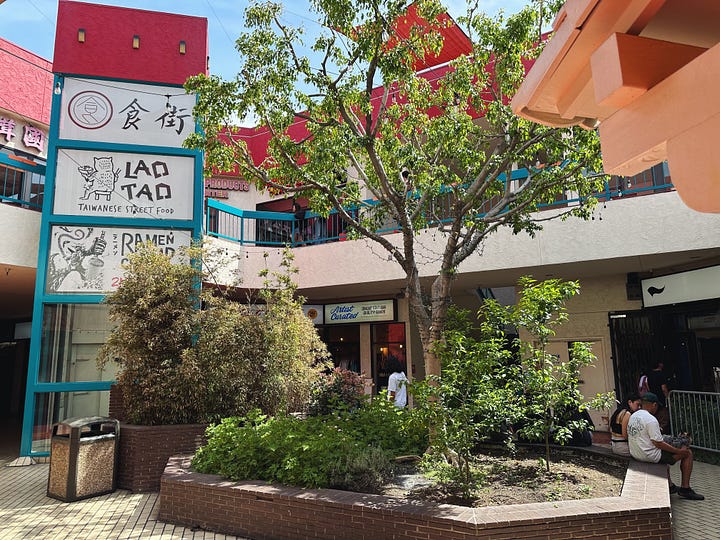
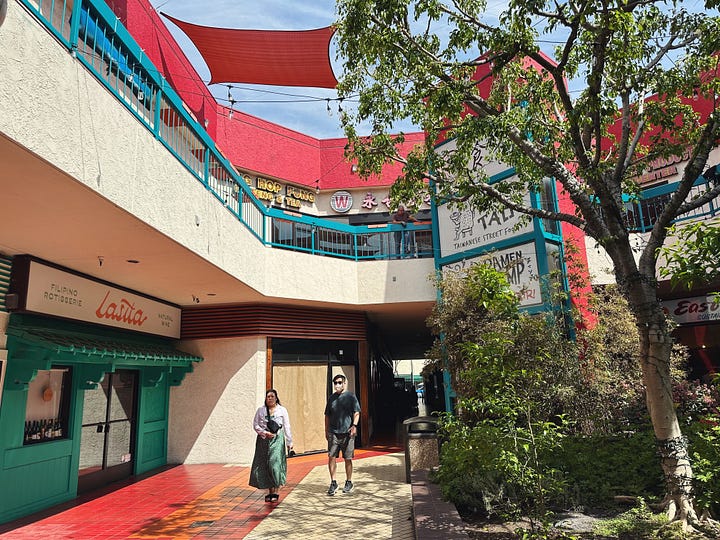
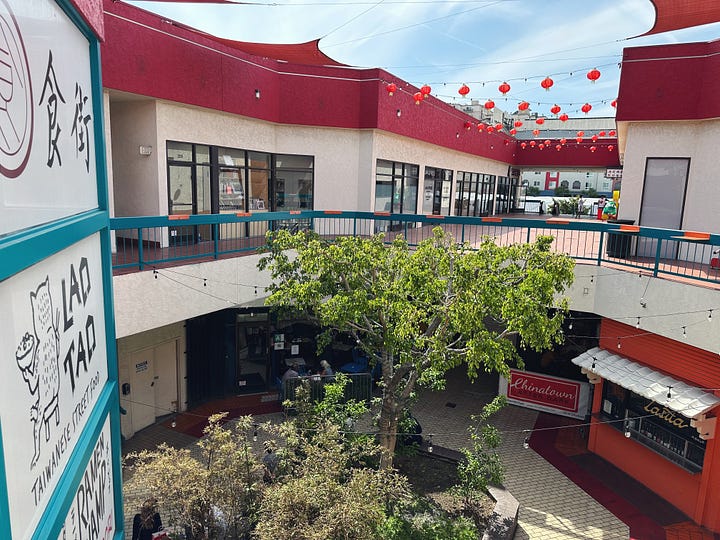
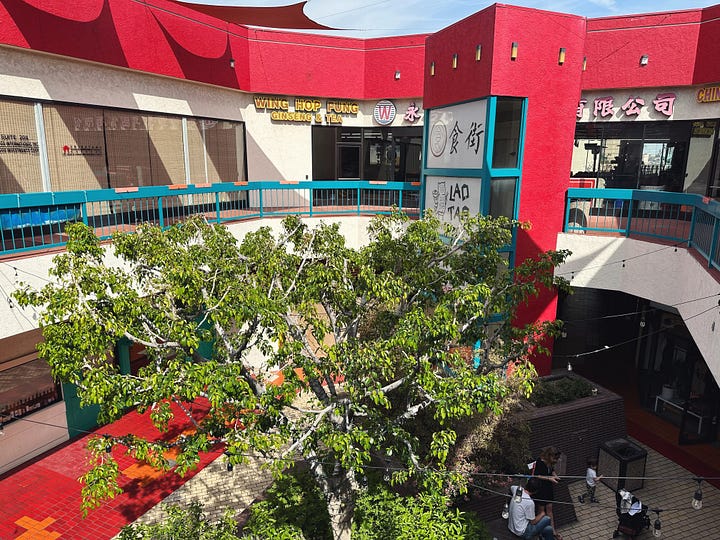
Gentrification has played a leading role in the film of Los Angeles for the past two decades, leaving areas like Leimert Park, Inglewood, Echo Park, Highland Park, and… Chinatown, to play supporting roles. It’s undoubtedly one of the most polarizing situations faced by metropolitan cities, resulting in nuanced, complex ripples.
For example, I’m Chinese-American and I live in a newer apartment complex that the majority of people would consider a “gentrifying” building. For native Chinatown residents who have been here for a generation or more, I’m considered a gentrifier because the average rental price of my building far outweighs the average rent in this area. The presence of my building (and my residence in it) forces market dynamics that push native residents out of the area.
I feel an inherent sadness, knowing I’m a part of the reason native Chinatown residents had to leave or are forced to leave now, in order to survive. I feel anger towards the system responsible for situations like this. My grandmother and grandfather could’ve easily been some of the people I’m pushing out.
How much more paradoxical can my presence here get?
A sense of confusion, helplessness, and shame engulfs me everytime I think about my role in gentrification.
There were no policies that were going to keep me from living here—I’m here regardless of anyone’s desires. I find myself analyzing this dilemma constantly as someone who has seen gentrification transform my home: the Bay Area.
My family has been fortunate enough to continue setting roots in the East Bay, but throughout the years, many friends I’ve grown up with haven’t experienced the same fortune. Due to rising cost-of-living standards, gentrification, and the tech boom, many have left the Bay for a more financially sustainable lifestyle, but my privilege has shielded me from these realities.
So, what can a “gentrifier” do when they land in a community like this? Renowned LA chef and food truck pioneer, Roy Choi, vulnerably explored this question in an episode of “Broken Bread” titled “Returning to Chinatown”. He’s Korean-American, from the LA area, and owned a restaurant in Chinatown called Chego from 2013 to 2019. His claim to the gentrifier title could arguably be stronger than mine, given the history, success, and impact of Chego. In an emotional scene during the episode, he asks a community advocate, “What could I have done better? Was Chego a part of the problem (of gentrification in Chinatown)?” I could sense genuine worry and concern about his role in this conversation–feelings I can relate to.
At the same time, I feel dutiful and responsible for creating an intentional experience here grounded in community. I acknowledge that LA Chinatown looks different and will continue to look different, but as long as my generation empowers the community, this iteration of Chinatown can embody a fresh sense of diversity—and more diversity can only strengthen a community.
Chinatown instilled my first lessons of community, and it continues to teach me to this day. I’m reminded that this place symbolizes so much for Chinese people, our history in America, and the role community plays in our survival. The foundational human activities of sharing resources, investing in each other, intergenerational connectivity, honoring past and present, and reimagining the future–they’re all actualized here. When we’re in Chinatown, we stand on the shoulders of our ancestors and relatives every day, and we don’t exist in isolation. Even though I’m Chinese-American, I can be seen as a newcomer here, and newcomers like me need to educate ourselves on the history of this place, the successes the community has created, and the challenges it has faced. Instead of prioritizing what our communities give us or what we can take, we have to find ways of building and contributing to the community, even if in subtle ways, like spending locally or immersing ourselves in the stories written from and by the community (bonus points if we’re able to carry these stories on). Without a commitment to this process, we become what places fear most about newcomers: gentrifiers and exploiters.
Is this what we want?
Now, I turn the conversation to you:
How do you feel about your relationship with your culture, its history, and your place in its future?
What’re (simple) ways you can reconnect with your culture?
What can your culture remind you of when it comes to community? What can it teach you about community?
What’re ways you can contribute to supporting your cultural community?
If you’re a newcomer in the place you live, how can you learn more about the history of the place? How can you (uniquely) contribute to creating a better community and future for it?
Huge shoutout to Lyle, Allie, Ellen, Russell, and Diana for helping edit this piece!





